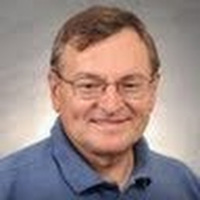Ruben Razo - Profile on Academia.edu (original) (raw)

Related Authors
Uploads
Papers by Ruben Razo
Physica Scripta, 2019
The Darboux method is commonly used in the coordinate variable to produce new exactly solvable (s... more The Darboux method is commonly used in the coordinate variable to produce new exactly solvable (stationary) potentials in quantum mechanics. In this work we follow a variation introduced by Bagrov, Samsonov, and Shekoyan (BSS) to include the time-variable as a parameter of the transformation. The new potentials are nonstationary and define Hamiltonians which are not integrals of motion for the system under study. We take the stationary oscillator of constant frequency to produce nonstationary oscillators, and also provide an invariant that serves to define uniquely the state of the system. In this sense our approach completes the program of the BSS method since the eigenfunctions of the invariant are an orthonormal basis for the space of solutions of the related Schrödinger equation. The orthonormality holds when the involved functions are evaluated at the same time. The dynamical algebra of the nonstationary oscillators is generated by properly chosen ladder operators and coincides with the Heisenberg algebra. We also construct the related coherent states and show that they form an overcomplete set that minimizes the quadratures defined by the ladder operators. These states are not invariant under time-evolution since their time-dependence relies on the basis of states and not on the complex eigenvalue that labels them. Some concrete examples are provided.
New confining optical media generated by Darboux transformations
Journal of Physics: Conference Series, 2019
Journal of Physics: Conference Series, 2015
View the article online for updates and enhancements.
Physica Scripta, 2019
The Darboux method is commonly used in the coordinate variable to produce new exactly solvable (s... more The Darboux method is commonly used in the coordinate variable to produce new exactly solvable (stationary) potentials in quantum mechanics. In this work we follow a variation introduced by Bagrov, Samsonov, and Shekoyan (BSS) to include the time-variable as a parameter of the transformation. The new potentials are nonstationary and define Hamiltonians which are not integrals of motion for the system under study. We take the stationary oscillator of constant frequency to produce nonstationary oscillators, and also provide an invariant that serves to define uniquely the state of the system. In this sense our approach completes the program of the BSS method since the eigenfunctions of the invariant are an orthonormal basis for the space of solutions of the related Schrödinger equation. The orthonormality holds when the involved functions are evaluated at the same time. The dynamical algebra of the nonstationary oscillators is generated by properly chosen ladder operators and coincides with the Heisenberg algebra. We also construct the related coherent states and show that they form an overcomplete set that minimizes the quadratures defined by the ladder operators. These states are not invariant under time-evolution since their time-dependence relies on the basis of states and not on the complex eigenvalue that labels them. Some concrete examples are provided.
New confining optical media generated by Darboux transformations
Journal of Physics: Conference Series, 2019
Journal of Physics: Conference Series, 2015
View the article online for updates and enhancements.











